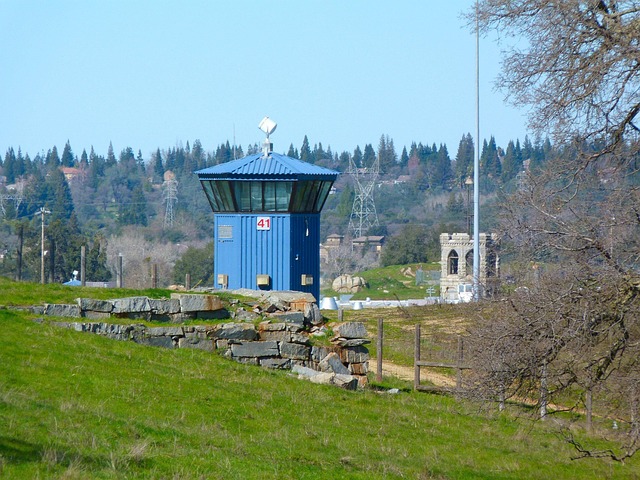Executive Protection Specialists (EPS) are crucial for safeguarding high-profile individuals, offering advanced training beyond traditional bodyguard duties. They analyze risks, leverage situational awareness techniques, and combine physical protection with risk assessment, crisis management, and communication strategies. Top-tier EPS programs empower executives to recognize dangers, respond effectively, and make sound decisions in diverse scenarios, enhancing personal safety, protecting businesses, and fostering organizational resilience. Through comprehensive risk assessment, threat modeling, and personalized strategies, EPS ensure executives are equipped to navigate complex environments and maintain a strategic edge. Regular training, simulations, and evaluations ensure continuous improvement in executive protection training.
“In today’s complex global landscape, ensuring the safety and security of high-level executives is more critical than ever. Executive Protection Specialists (EPS) play a pivotal role in safeguarding individuals facing heightened risks. This article offers a comprehensive review of their expertise, highlighting the essential training programs designed to enhance personal safety and situational awareness among executives.
We’ll explore key components of effective initiatives, strategic implementation guidelines, and methods for evaluating the impact of these critical security measures, focusing on the vital role of EPS in mitigating risks.”
Understanding Executive Protection Specialists: A Critical Overview
Executive Protection Specialists (EPS) play a critical role in ensuring the safety and security of high-profile individuals, often executives, celebrities, or political figures. These professionals are trained to anticipate, assess, and mitigate risks associated with various situations, from everyday activities to high-risk events. Their expertise lies in situational awareness, where they continuously scan their surroundings for potential threats, using both active and passive observation techniques.
EPS are not merely bodyguards but skilled analysts who understand the dynamic nature of security landscapes. They employ a multifaceted approach, combining physical protection, risk assessment, crisis management, and communication strategies. With their keen attention to detail and ability to make critical decisions in split seconds, EPS are the first line of defense against threats, ensuring their clients’ well-being in an increasingly complex and unpredictable world.
The Importance of Personal Safety Training for High-Level Executives
Personal safety and situational awareness training are essential components that high-level executives should not overlook. In today’s complex and often unpredictable world, executives face various risks, from physical threats to cybersecurity attacks. Executive protection specialists emphasize that these professionals are not just responsible for securing their clients’ physical well-being but also for safeguarding their reputations and businesses.
By participating in comprehensive training programs, high-level executives can enhance their ability to recognize potential dangers, respond effectively to critical situations, and make informed decisions. This proactive approach not only ensures personal safety but also fosters a culture of resilience and preparedness within organizations. Such training equips executives with the skills needed to navigate challenging environments, protect sensitive information, and maintain a strategic advantage in an ever-evolving landscape.
Key Components of Effective Situational Awareness Programs
Effective situational awareness training for executives involves a multi-faceted approach, tailored by expert executive protection specialists to address unique risks and challenges. Key components include risk assessment and threat modeling, where specialists analyze an executive’s environment, personal security details, and potential vulnerabilities to identify probable threats. This foundational step allows for the development of customized strategies, incorporating discreet surveillance, communication protocols, and crisis response plans.
Beyond technical skills, these programs emphasize mental acuity and awareness training. They teach executives to recognize subtle cues, anticipate potential hazards, and maintain a heightened sense of observation in diverse settings. Regular simulations, scenarios, and debriefings reinforce learning, preparing individuals to react calmly and confidently during high-stress situations.
Implementing Executive Training: Strategies and Best Practices
Implementing comprehensive executive training programs on personal safety and situational awareness is a strategic move by organizations to empower their leaders with vital skills. These programs, often designed by expert executive protection specialists, cater to high-level executives facing complex security challenges. The curriculum typically includes risk assessment techniques, threat identification strategies, and crisis management simulations, all tailored to the unique needs of senior-level executives.
Best practices suggest creating interactive and scenario-based training sessions that encourage active participation from the executives. Regular updates on emerging security trends and technology also ensure that the programs remain relevant and effective in today’s dynamic security landscape. Collaborating with seasoned professionals and industry experts can significantly enhance the quality of training, providing executives with practical insights and real-world experience, ultimately fostering a culture of proactive safety measures within the organization.
Measuring Success: Evaluating the Impact of Personal Safety Initiatives
Measuring the success of personal safety initiatives is paramount in evaluating the effectiveness of executive training programs. Executive protection specialists employ various methods to assess the impact, ensuring that participants not only grasp concepts but also apply them in real-world scenarios. Post-training evaluations often include feedback forms and case studies designed to test situational awareness and decision-making skills under pressure.
These assessments help identify areas where trainees excel and those needing further instruction. By analyzing performance data, specialists can tailor future programs, addressing specific knowledge gaps or skill deficiencies. Regular measuring and refinement ensure that executive protection training remains relevant and impactful, ultimately enhancing the safety and security of high-risk individuals.
Executive training programs focused on personal safety and situational awareness are vital for high-level executives, as they play a crucial role in navigating complex environments. By understanding the expertise of executive protection specialists and implementing well-structured programs, organizations can significantly enhance their leaders’ security. These initiatives ensure that executives are prepared to recognize and respond to potential threats, ultimately fostering a safer and more secure work environment. Through strategic training, measuring success through evaluation, and adopting best practices, companies can empower their top talent to make informed decisions, stay alert, and mitigate risks in today’s dynamic world.
